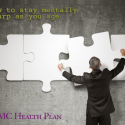The pros and cons of napping

There are a number of positive and negative side effects to consider
It’s mid-afternoon and, after getting to bed later than usual, you are ready for a nap … but should you actually do it? You may worry that you will wake up feeling even more tired or that you’ll sleep for too long. Maybe you’re worried it will prevent you from sleeping when bedtime rolls around.
Is there any truth to those worries? Let’s dive in to whether naps are good or bad for you. They can provide a great boost of energy if they fit into your day and schedule, but there are some things to keep in mind. Here’s all the information you need to decide whether you really want that midday snooze.
The health benefits of napping
Relaxation—Waking up after a nap can leave you feeling relaxed and ready to take on the second half of your day.
Reduced fatigue—A quick “power nap” can relieve the fatigue you were feeling before you fell asleep, leaving you more energized.
Improved mood—A nap will help you to rest and rejuvenate. This could cure your afternoon irritation and allow you to wake up with a new mindset.
Increased alertness—Fatigue can lead to decreased alertness. Just 10-20 minutes of rest can leave you feeling attentive and ready for the rest of your day. In fact, a NASA study showed that a 40-minute nap improved astronauts’ and pilots’ performance by 34 percent and their alertness by 100 percent!1
The potential downsides of napping
Grogginess—It’s not a myth that a long nap can do more harm than good. If a nap is too long, you can actually wake up feeling even more tired than you were before. Entering REM sleep (or “deep sleep”) but waking up before the cycle is finished will leave you feeling groggy.
Disorientation—As with grogginess, disorientation is a result of an interrupted REM cycle. That’s why you sometimes wake up feeling less than great when you’ve caught had a long, midday snooze.
Trouble falling asleep at night—When you nap too close to your bedtime, you may have trouble falling asleep and be restless throughout the night.
These are common with naps that last longer than 30-40 minutes. An ideal nap ends right before you hit them REM cycle or “deep” sleep.
Ideal nap times
Onset fatigue or unexpected tiredness—If you are feeling really tired and have the time, a quick nap may help to get you through the rest of your day.
Upcoming sleep loss—If you know that you are going to get less sleep than usual due to a shift change or another circumstance, a nap can help you get through until your later bedtime.
Planned naps—Those with flexible schedules may find that planning a nap into their days allows them to maintain energy throughout the day. For example, if you wake up to go to the gym at 6 a.m., having a nap in the afternoon may allow you to stay up through your 8 p.m. choir rehearsal.
So, are naps good or bad for you?
The key to healthy napping is to make sure that it fits in with your routines and schedules—specifically your nighttime sleep schedule. Research suggests that a 20- to 30-minute nap can give you increased energy and alertness for the rest of your day without interrupting your nighttime cycle.2 However, naps that are long enough to allow you to enter REM sleep may be trickier to balance. The key is to carve out the time and stick to the plan!
Need more resources on sleep hygiene? Check out these other articles.
- How to sleep better: Sleeping tips and tricks
- How much sleep do I need?
- 6 effects of sleep deprivation
- So, you say you’re not a morning person?
References:
1Napping. National Sleep Foundation. No date. Accessed February 14, 2020. https://www.sleepfoundation.org/articles/napping
2What is sleep hygiene. National Sleep Foundation. No date. Accessed February 14, 2020. https://www.sleepfoundation.org/articles/sleep-hygiene



